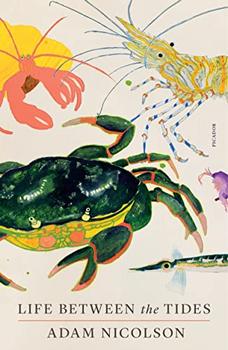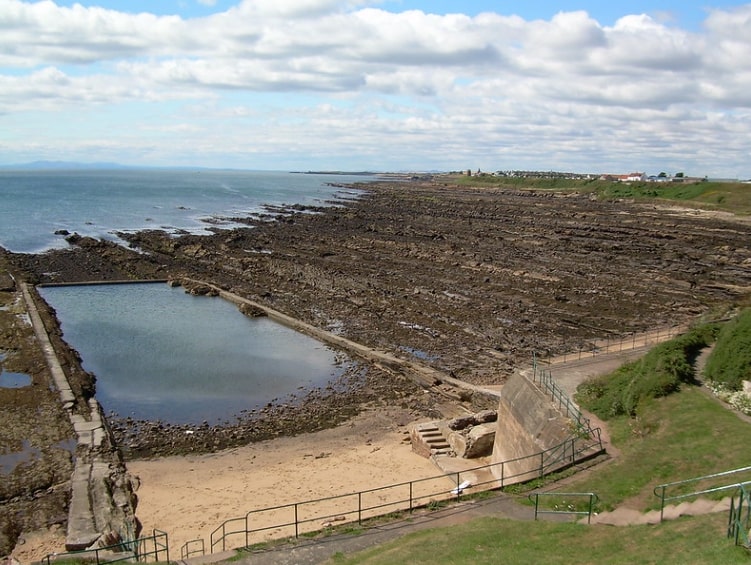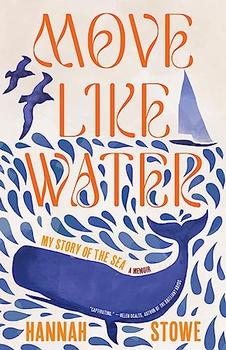Summary | Excerpt | Reviews | Beyond the book | Read-Alikes | Genres & Themes | Author Bio

Adam Nicolson explores the marine life inhabiting seashore rockpools with a scientist's curiosity and a poet's wonder in this beautifully illustrated book.
The sea is not made of water. Creatures are its genes. Look down as you crouch over the shallows of a rockpool and you will find a periwinkle or a prawn, a claw-displaying crab or a cluster of anemones ready to meet you. Go to the rocks and the living will say hello.
Inside each rockpool, tucked into one of the infinite crevices of the tidal coastline, lies a rippling, silent, unknowable universe. Below the stillness of the surface course different currents of endless motion―the ebb and flow of the tide, the steady forward propulsion of the passage of time, and the tiny lifetimes of its creatures, all of which coalesce into the grand narrative of evolution.
In Life Between the Tides, Adam Nicolson investigates one of the most revelatory habitats on earth. Under his microscope, we see a prawn's head become a medieval helmet and a group of "winkles" transform a Dickensian social scene, with mollusks munching on Stilton and glancing at their pocket watches. Or, rather, is a winkle more like Achilles, an ancient hero, throwing himself toward death for the sake of glory? For Nicolson, who writes "with scientific rigor and a poet's sense of wonder" (The American Scholar), the world of the rockpools is infinite and as intricate as our own.
As Nicolson journeys between the tides, both in the pools he builds along the coast of Scotland and through the timeline of scientific discovery, he is accompanied by great thinkers―no one can escape the pull of the sea. We meet Virginia Woolf and her Waves; a young T. S. Eliot peering into his own rockpool in Massachusetts; even Nicolson's father-in-law, a classical scholar who would hunt for amethysts along the shoreline, his mind on Heraclitus and the Hellenists. And, of course, scientists populate the pages; not only their discoveries, but also their doubts and errors, their moments of quiet observation and their thrilling realizations.
It is all within the rockpools, where you can look beyond your own reflection and find the miraculous an inch beneath your nose. "The soul wants to be wet," Heraclitus said in Ephesus twenty-five hundred years ago. This marvelous book demonstrates why it is so.
Includes color and black-and-white photographs.
Life Between the Tides is one of those rare books that is truly interdisciplinary, transcending genres to effortlessly reveal the wondrous underlying nature of the mundane and overlooked. In doing so, Adam Nicolson unlocks and shares profound truths about the meaning of life. He sets out the true philosophical underpinning as to why it is important to preserve the world around us and all life that inhabits it. It is not for utilitarian purposes, but because the care and preservation of the balance and flux of the world is indivisible from our own existence...continued
Full Review
(644 words)
This review is available to non-members for a limited time. For full access,
become a member today.
(Reviewed by Jennifer Hon Khalaf).
 Tidal pools are pockets of saltwater that exist in the intertidal zone — the area in which the ocean meets the land. They are formed due to the gravitational pull of the moon and the sun, as well as the centrifugal pull of the Earth as it turns, which draws the water in gentle waves around the globe. Tides vary around the world based on the contours of the land and are categorized into three different types determined by the shape of the coastline and location: (1) diurnal, where there is just one high and one low tide daily; (2) semi-diurnal, where there are two matching high and two matching low daily tides; and (3) mixed semi-diurnal, where the two high and two low daily tides are of varying heights. Tides are also categorized in ...
Tidal pools are pockets of saltwater that exist in the intertidal zone — the area in which the ocean meets the land. They are formed due to the gravitational pull of the moon and the sun, as well as the centrifugal pull of the Earth as it turns, which draws the water in gentle waves around the globe. Tides vary around the world based on the contours of the land and are categorized into three different types determined by the shape of the coastline and location: (1) diurnal, where there is just one high and one low tide daily; (2) semi-diurnal, where there are two matching high and two matching low daily tides; and (3) mixed semi-diurnal, where the two high and two low daily tides are of varying heights. Tides are also categorized in ...
This "beyond the book" feature is available to non-members for a limited time. Join today for full access.

If you liked Life Between the Tides, try these:

by Hannah Stowe
Published 2025
A book to sweep you away from the shore, into a wild world of water, whale, storm, and starlight— to experience what it's like to sail for weeks at a time with life set to a new rhythm.

by Helen Czerski
Published 2024
A scientist's exploration of the "ocean engine"—the physics behind the ocean's systems—and why it matters.